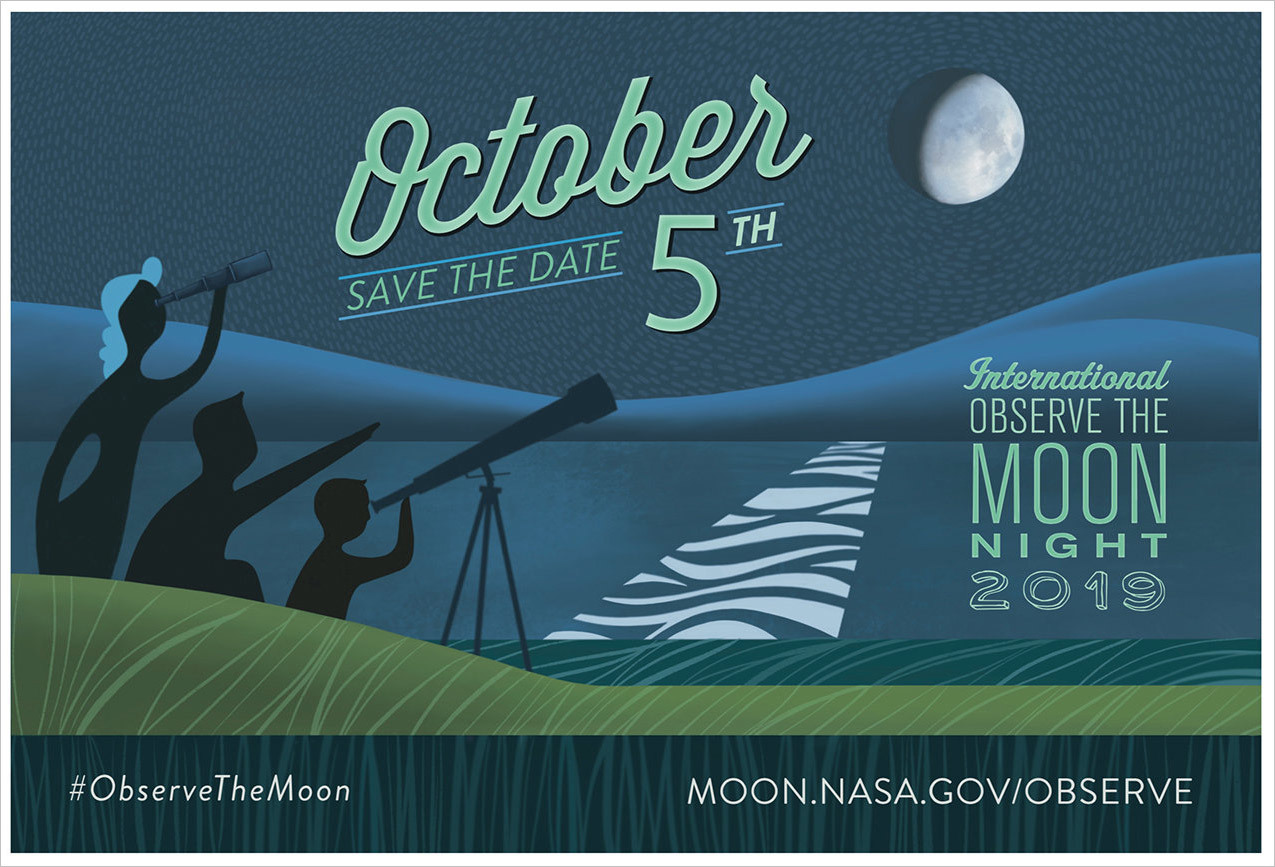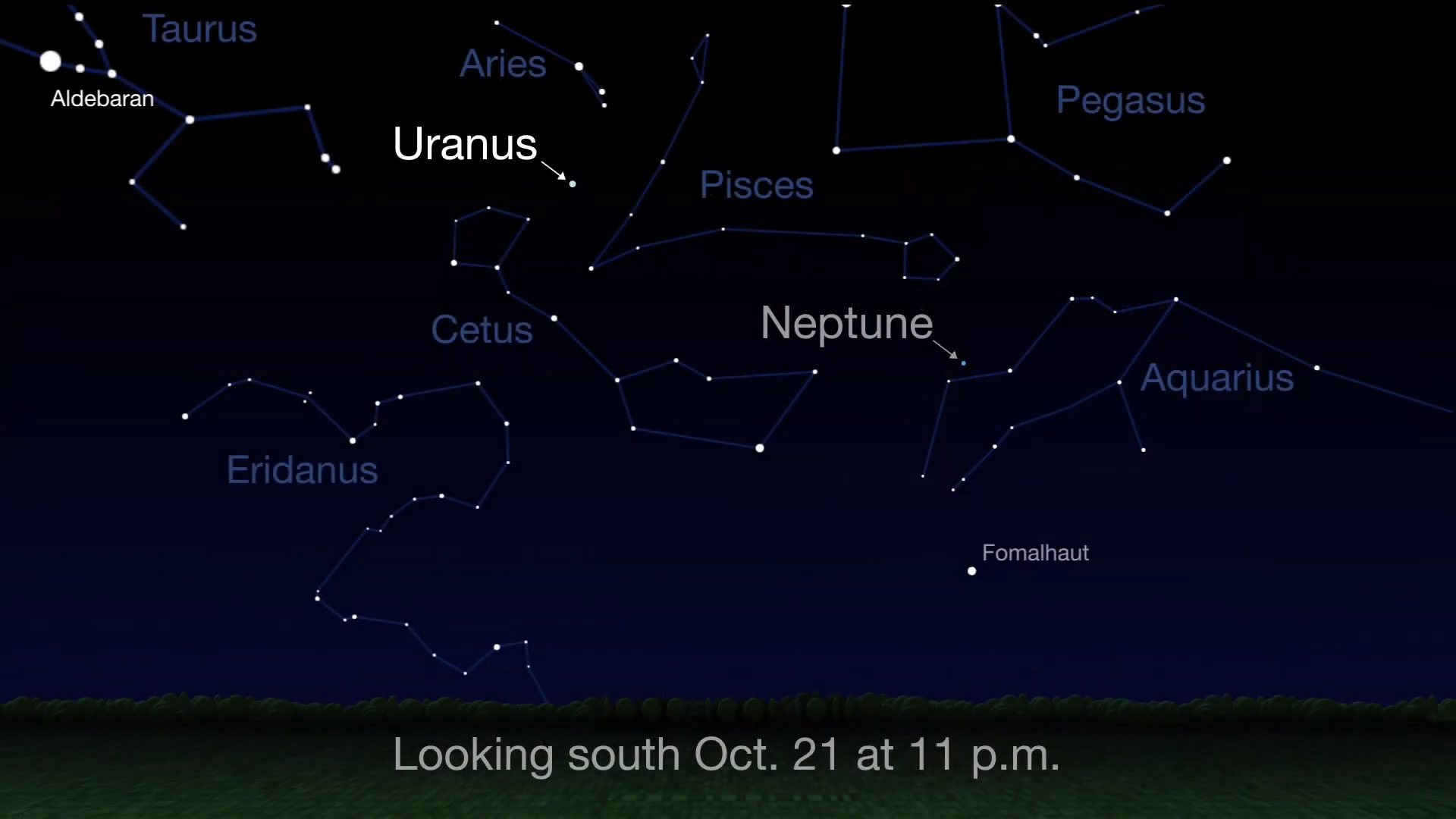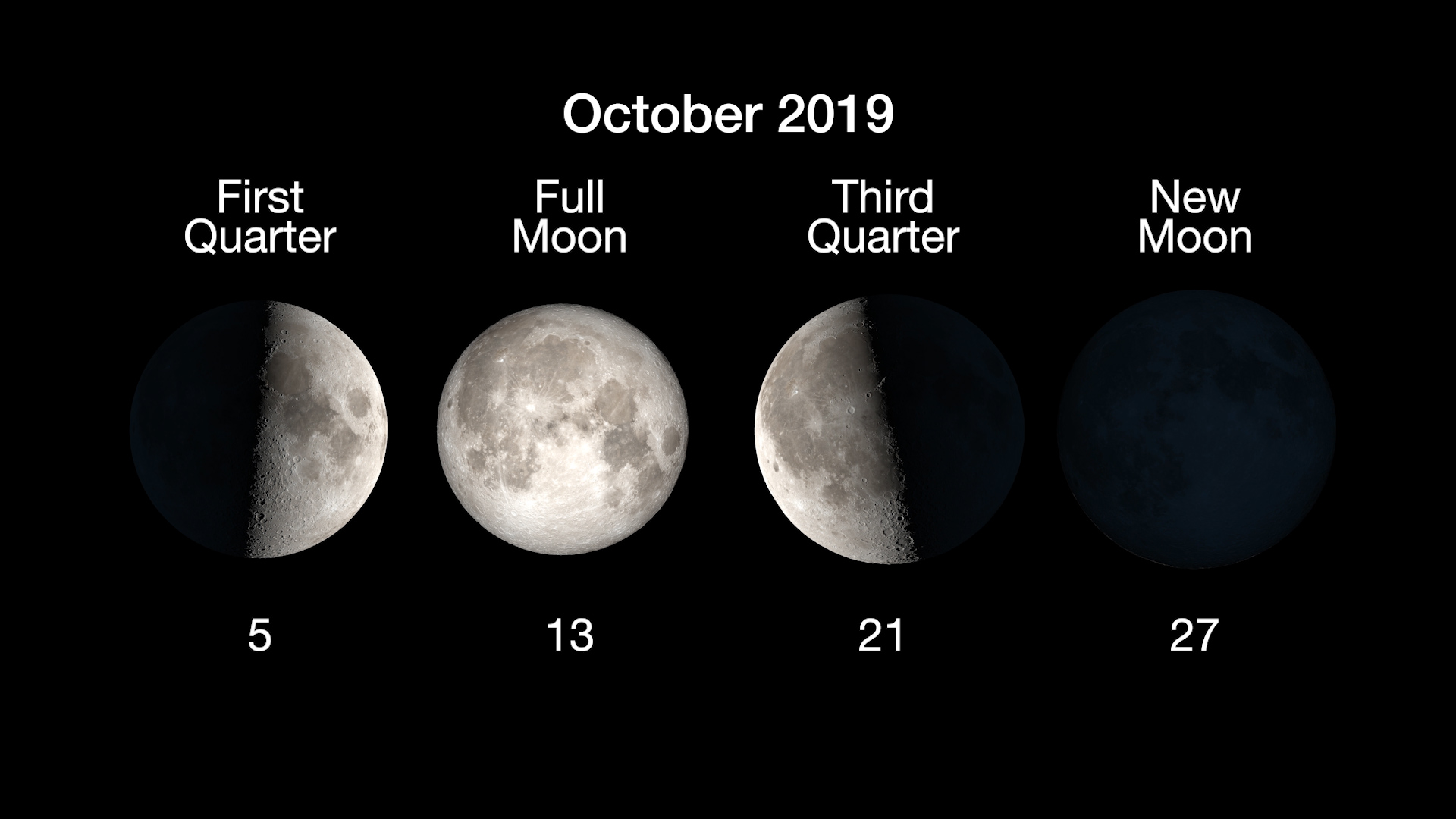What’s Up Video: October 2019 Skywatching Tips from NASA
| Credit | NASA/JPL-Caltech (Presenter: Preston Dyches) |
|---|---|
| Language |
|
Night Sky: October 2019: What Can You See This Month?
What can you see in the October sky? Join the global celebration of International Observe the Moon Night on Oct. 5th, then try to catch the ice giant planets Uranus and Neptune, which are well placed for viewing in the late night sky.
Transcript
What's Up for October? A night for the whole world to observe the Moon and hunting for ice giants!
International Observe the Moon Night is Oct. 5th. It's an annual celebration of lunar observation and exploration. Events are scheduled in lots of places around the world, so there may be one near you. But all you really need to participate is to go out and look up.

The event is timed to coincide with the first quarter moon. This allows for some great observing along the lunar terminator — the line that divides the dayside from the nightside. With even a small pair of binoculars, you can see some great details as features like mountains and craters pop up into the light. Learn more and look for events in your area at moon.nasa.gov/observe.
October is a great time to try and capture an ICE GIANT. Now, these aren't mythical creatures. They're planets — the most distant of the major planets of our solar system, Uranus and Neptune.
The four giant planets of our solar system are not created equal. The gas giants, Jupiter and Saturn, are much bigger and way more massive, while the ice giants are so named because they contain a much higher amount of materials that typically form ices in the frigid depths of the outer solar system.
In October, both Uranus and Neptune are well placed in the late night sky. In fact, you can see all four giant planets in the same evening if you look for Jupiter and Saturn in the west after sunset, and then come back a couple of hours later to spot Uranus and Neptune. (Think of it as your own personal "Voyager mission." NASA's Voyager 2 is the only spacecraft to have visited the ice giants so far, although scientists are eager to go back for a more detailed study.)

Unlike Jupiter and Saturn, the ice giants are quite faint, so the best way to observe them is with a telescope, and from personal experience, it's much easier to find them if you have a computer-controlled mount that can automatically point the telescope for you. If you don’t have access to one, find a local event with the Night Sky Network at nightsky.jpl.nasa.gov. Otherwise, sky watching apps can help you star-hop your way to these two incredibly distant planets.
Now be advised, because they’re so far away, each planet appears as just a point of light. But with a modest telescope, you'll see Uranus as a tiny disk. You'd be forgiven for mistaking Neptune as a star — it's the same size as Uranus, but much farther away, so it's fainter.
The ice giants are elusive, but well worth the effort to say you've seen them with your own eyes.
Here are the phases of the Moon for October. You can catch up on all of NASA's current and future missions at nasa.gov.

I'm Preston Dyches from NASA's Jet Propulsion Laboratory, and that's What's Up for this month.
Sky Charts
Sky charts presented in What's Up show a field of view of 90 degrees — that is, an area on the sky that goes from the horizon up to the top of the sky (also called the zenith).
Observing Uranus & Neptune
They're called the "ice giants," but Uranus and Neptune don't actually contain ice in their interiors. In addition to lots of hydrogen and helium, they contain a significantly higher amount (compared to Jupiter and Saturn) of materials that would have been frozen as ices early on, when the planets were forming. Mostly these would have been water, ammonia and methane. So the ice giants aren't frozen beneath their atmospheres; likely they are vast, hot, fluid oceans of these chemicals.
And while Neptune's so pretty, with its azure blue hue, dynamic spots and clouds, Uranus is often thought of as the boring one of the giant planets. This has much to do with the fact that the camera on Voyager 2, the only spacecraft to visit Uranus so far, was not able to see at wavelengths of light that passed through the haze of its upper atmosphere. But Uranus isn't boring! It has lots features below the haze when observed at wavelengths that can pass through the haze. For example, see: https://solarsystem.nasa.gov/resources/455/uranus-in-detail/?category=planets_uranus
Also, let's just get this straight: it's pronounced YUR-uh-nuss, not yur-AY-nuss!
The best times to observe Uranus and Neptune in October are in the first and last week or so of the month, when there won't be a bright Moon to contend with. That said, both planets are bright enough that you can generally spot them even with the Moon present. Uranus is bright enough to be seen with the unaided eye, but only with good eyesight, under dark skies and knowing just where to look. Neptune is too faint to find without the help of a telescope.
Note that a standard telescope eyepiece filps the positions of the stars vertically from what we show in the What's Up sky charts. (The charts show the stars as they appear on the sky to your eyes.) So, when looking through the eyepiece, the naked-eye star Phi Aquarii (ϕ Aquarii) appears quite close to Neptune, but it will appear below and to the left of Neptune, rather than above and to the left as in our sky chart.
More about Uranus: https://solarsystem.nasa.gov/planets/uranus/overview/
More about Neptune: https://solarsystem.nasa.gov/planets/neptune/overview/
Additional Resources
Additional astronomy & skywatching info from NASA's Night Sky Network: https://nightsky.jpl.nasa.gov
Meteor stories from NASA's Watch the Skies Blog:
